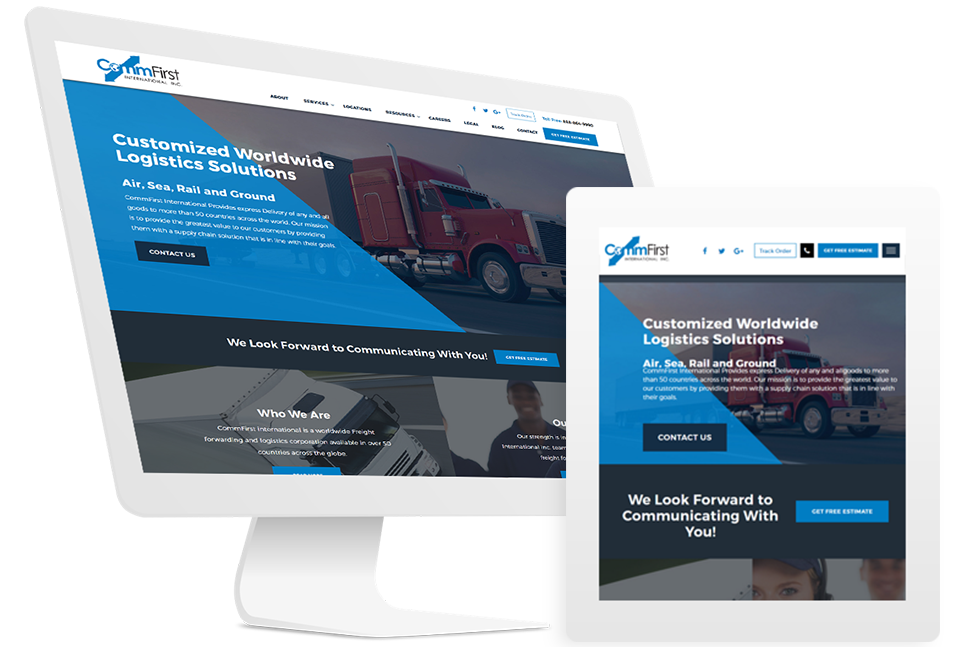Affordable Website Design Solutions for Large Businesses
Top Tips for Developing an Impactful Site Design That Transforms
In today's electronic landscape, the relevance of an impactful website design can not be overemphasized, particularly when it pertains to transforming visitors into consumers. To accomplish this, one should consider a range of aspects, including understanding the target audience, prioritizing user experience, and enhancing for mobile platforms. Additionally, the critical usage of compelling call-to-actions and a well-defined visual hierarchy plays an important function in directing customers with their trip. As we explore these vital elements, it ends up being evident that the success of your website rests on greater than just looks; it calls for a thoughtful technique to design and performance.

Understand Your Target Audience
Comprehending your target market is basic to effective site style, as it lays the groundwork for creating an engaging individual experience. Identifying that your users are, including their demographics, preferences, and actions, enables designers to customize the internet site's material, design, and performance to satisfy details needs.
Performing complete market study is essential in this process. Studies, meetings, and analytics can offer valuable understandings into user expectations and discomfort factors. By assembling this data, designers can create customer personalities that stand for various sectors of the target market, ensuring that design choices are notified and pertinent.
Furthermore, comprehending the target audience aids in choosing appropriate style components such as color design, typography, and images that resonate with customers. A site that talks straight to its audience fosters a feeling of connection and count on, urging longer brows through and higher conversion prices.
Inevitably, a user-centered technique to internet site style not only improves user satisfaction yet additionally sustains company purposes by driving interaction and loyalty. By focusing on the demands and preferences of the target market, a website can effectively serve its objective and accomplish preferred outcomes.
Prioritize Individual Experience
To enhance the general performance of a site, prioritizing user experience (UX) is vital (Website Design). A properly designed UX makes certain that visitors can browse the website effortlessly, find information rapidly, and involve with content meaningfully. This results in enhanced customer complete satisfaction and higher conversion prices
Begin by executing intuitive navigating. Menus ought to be realistically structured, permitting individuals to situate essential areas of the site with marginal initiative. Uniformity in style aspects, such as color design and typefaces, promotes knowledge, which is essential for keeping user involvement.
Furthermore, take into consideration the packing rate of your web site. A delay of just a couple of secs can result in substantial drop-offs, as individuals are less likely to wait on a slow-loading page. Enhancing pictures and enhancing code can boost performance and maintain visitors.
By focusing on user experience, you not just produce an extra enjoyable setting for site visitors however additionally reinforce your brand's credibility. Inevitably, an emphasis on UX is an investment in the long-term success of your web site.
Enhance for Mobile Tools
Maximizing for smart phones is vital in today's digital landscape, where an increasing variety of individuals gain access to websites through smartphones and tablets. A mobile-friendly layout not only enhances individual experience yet additionally plays a significant function in boosting online search engine rankings. To accomplish this, it is essential to take on a receptive style that automatically adjusts to various screen dimensions and alignments.

Packing rate is another vital factor; mobile users are normally much less patient and anticipate quick access to information. By prioritizing mobile optimization, you guarantee that your website continues to be competitive and efficiently involves a wider target market.
Usage Compelling Call-to-Actions
A web site's efficiency commonly rests on its capacity to direct visitors toward preferred activities, making engaging call-to-actions (CTAs) vital components of design. CTAs function as the pivotal factors that route customers to engage with the site, whether that indicates purchasing, registering for a newsletter, or downloading and install a resource.
To create effective CTAs, quality is extremely important. Usage succinct language that clearly communicates the activity you want the individual to take. Expressions such as "Begin," "Register Free," or "Shop Now" not only share seriousness however also eliminate uncertainty. The placement of CTAs is similarly important; they ought to be tactically placed throughout the page to ensure they are easily visible, particularly in high-traffic areas.
Furthermore, think about making use of directional signs, such as arrows or images, to lead individuals towards these buttons. By concentrating on these elements, services can significantly boost customer engagement, driving conversions and ultimately achieving their site's objectives.
Focus on Visual Pecking Order
Efficient internet site layout depends greatly on a well-structured aesthetic power structure that guides users through web content perfectly. By organizing aspects in a manner that prioritizes navigate here info, designers can improve customer experience and promote decision-making. This entails making use of size, shade, contrast, and spacing strategically to accentuate the most vital elements of a web page.
The usage of bigger font styles for headings and subheadings develops a clear distinction between various areas, enabling customers to scan content effortlessly. Furthermore, using contrasting shades for switches and calls-to-action can record customer focus and urge interaction. Whitespace is one more necessary element; it protects against clutter and makes it possible for individuals to concentrate on vital messages without interruptions.
Pictures and graphics must enhance the message while additionally sticking to the recognized pecking order, enhancing the overall message (Website Design). Uniformity in layout elements, such as color pattern and typography, more enhances the visual pecking order, making navigating intuitive

Final Thought
In verdict, effective site design requires an extensive understanding of the target audience, prioritization of user experience, and mobile optimization. Ultimately, a well-executed website style offers as an important part in driving customer actions and accomplishing service objectives.